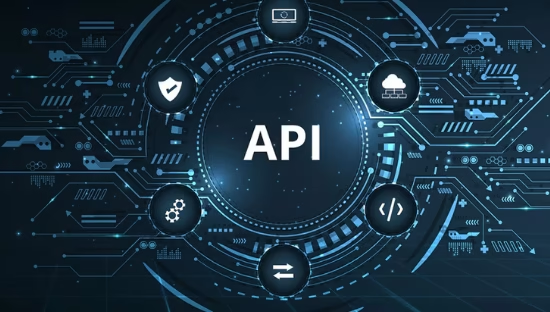
Why Cruise Ship Wi-Fi Still Feels Like Dial-Up in 2025
You’ve packed your bags, boarded your dream cruise, and can already picture yourself uploading those sunset shots straight to Instagram. But as soon as you hit “post,” the spinning wheel of doom starts. Minutes pass. Still nothing. Sound familiar?
According to a recent Ookla Speedtest study, you’re not alone. Staying connected on a cruise ship in 2025 is still a challenge—and an expensive one at that. The research highlights what many travelers have long suspected: Wi-Fi connections at sea are outdated, overpriced, and painfully slow. cruise ship Wi-Fi
Despite the advances in satellite internet and the rise of next-gen services like Starlink, the gap between land and sea connectivity remains vast.
Wi-Fi at Sea: Behind the Numbers
Ookla’s analysis of thousands of tests conducted aboard major cruise lines found no instance of Wi-Fi 7, the latest standard now common in premium hotels or airports. Instead, most ships still rely on Wi-Fi 5, while a surprising 12.5% are stuck on Wi-Fi 4—a protocol from over a decade ago.
To put that into perspective, Wi-Fi 4 launched in 2009. It’s the same generation you probably used in your first smartphone. In other words, it’s ancient in tech terms.
That means lower speeds, higher latency, and less reliability—three things you definitely don’t want when uploading photos, making video calls, or streaming music while at sea.
Expensive by Design
Connectivity doesn’t come cheap on the open ocean. The study reveals that Wi-Fi on cruises can cost more than an entire month of broadband on land.
Basic daily packages can reach around $18.70 (€16)—and that’s just for standard-speed browsing. Premium or “unlimited” packages, often marketed as fast, still rarely match the performance of a decent hotel connection.
“Free” Wi-Fi? Technically, yes—but usually capped, throttled, or available only for messaging apps. It’s a far cry from the always-on, high-speed connectivity travelers have come to expect on land or even on planes.
To compare: European operators like Vodafone or Orange offer daily travel eSIM data plans under €3 in most regions. Even in-flight Wi-Fi on long-haul airlines, such as Qatar Airways or Singapore Airlines, is often faster and sometimes complimentary for loyalty members.
What’s Slowing Things Down
Cruise ships rely on satellite links to beam internet to passengers. While companies like Starlink Maritime have significantly improved bandwidth and latency, real-world performance still depends on factors like satellite coverage, weather conditions, and how many passengers are online simultaneously.
During peak hours—think post-dinner social media scrolls—speeds drop dramatically. Ookla’s findings show that while Starlink provides better technical potential, the average real-world speeds onboard still fall short of expectations, often below levels needed to stream videos or upload large files smoothly.
The issue isn’t just bandwidth—it’s the infrastructure on the ship. Many vessels haven’t fully upgraded their internal network hardware, meaning even if the satellite connection improves, the onboard Wi-Fi can’t keep up.
Royal Caribbean Leads the Connectivity Wave
Among major cruise lines, Royal Caribbean stands out. Nearly half (49.7%) of the Wi-Fi tests on its ships used Wi-Fi 6, offering double the speeds of Wi-Fi 4 and much better stability. That’s a big leap forward compared to MSC Cruises (76.1% on Wi-Fi 5) and Princess Cruises (72.0% on Wi-Fi 5).
Royal Caribbean was also one of the first to partner with Starlink globally—a move that set a new standard for maritime connectivity. Other operators are catching up, but the rollout remains uneven across fleets.
iPhone Nation at Sea
Interestingly, the study also uncovered a cultural tech trend: iPhone users dominate at sea, making up over 60% of passengers based on Speedtest data. Only 25% of travelers use Samsung Galaxy devices, and the rest are scattered across smaller brands.
However, the most frequently used models—like the Samsung Galaxy S8+—don’t support Wi-Fi 6 or 5G, meaning even if ships upgraded their systems, many passengers wouldn’t benefit fully. It’s a digital mismatch between user devices and onboard infrastructure.
The Real Takeaway: It’s Time for a Connectivity Renaissance
Let’s be honest—cruise Wi-Fi shouldn’t still feel like a 2010 problem in 2025. The industry has all the pieces to change that: Starlink’s expanding satellite coverage, affordable maritime hardware, and travelers who are willing to pay for quality service.
Airlines have already proven that high-speed internet above the clouds is possible. Delta, Emirates, and JetBlue now offer free or ultra-fast Wi-Fi on many routes, while train operators in Europe are testing hybrid 5G-satellite solutions. Cruise operators need to follow suit—or risk losing their edge with younger, always-connected travelers.
Companies like Royal Caribbean are moving in the right direction with Wi-Fi 6 adoption, but others remain behind the curve. The good news? The next generation of maritime connectivity—powered by LEO (Low Earth Orbit) satellites, Wi-Fi 7, and integrated eSIM roaming—is already on the horizon.
GigSky’s Cruise + Land eSIM, powered by Cellular at Sea, lets travelers stay connected both onboard and in port with data plans starting at $34.99 for 1 GB over 7 days, available for major cruise routes across the Americas and the Caribbean. It installs instantly on your phone and works through satellite or coastal networks, so you can browse, message, and share without switching SIMs at sea.
If cruise lines want to stay relevant, they need to start treating internet access as a core part of the guest experience, not a luxury add-on. After all, sharing your voyage in real time isn’t just a perk anymore—it’s part of how we travel.










